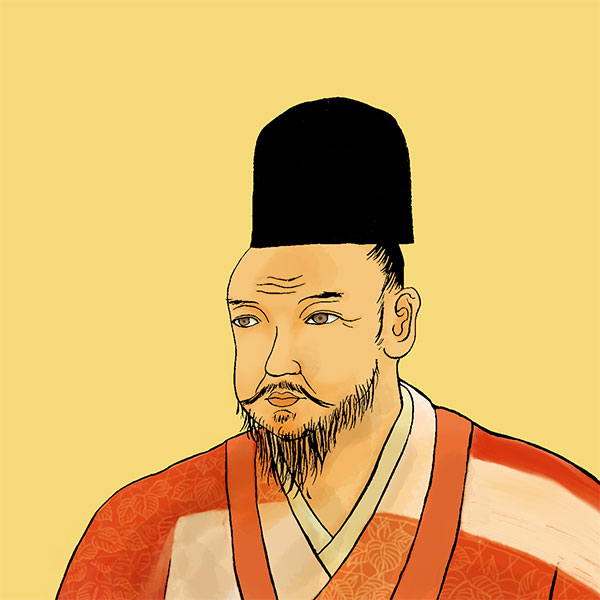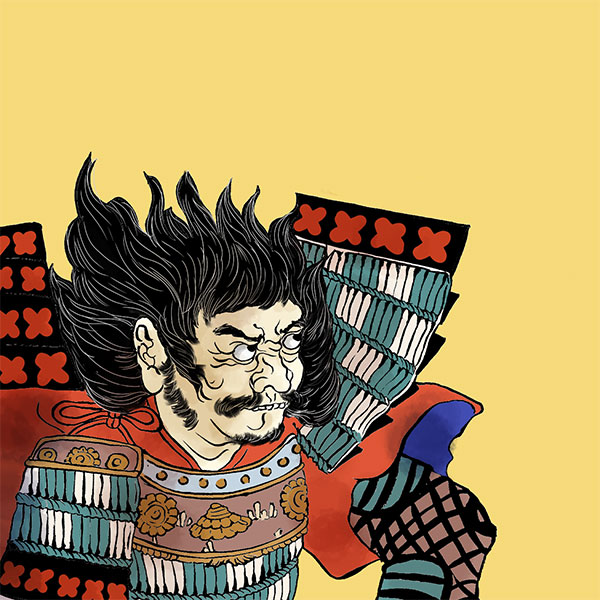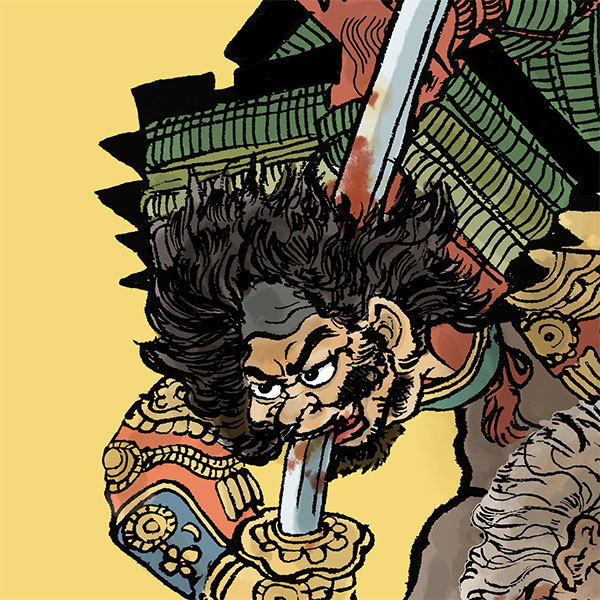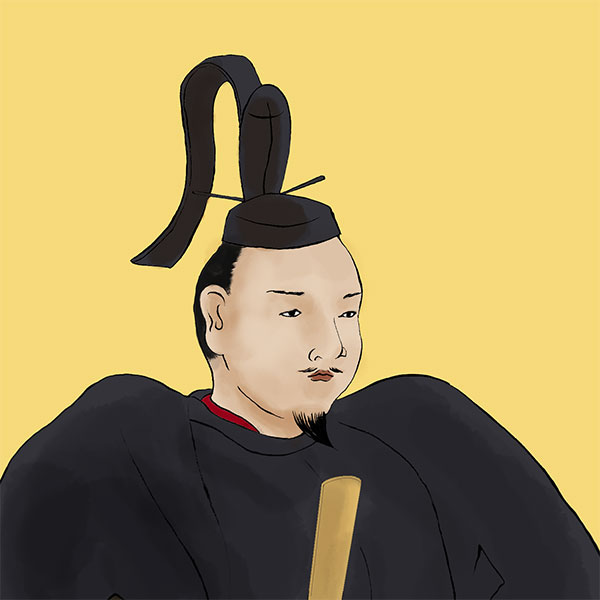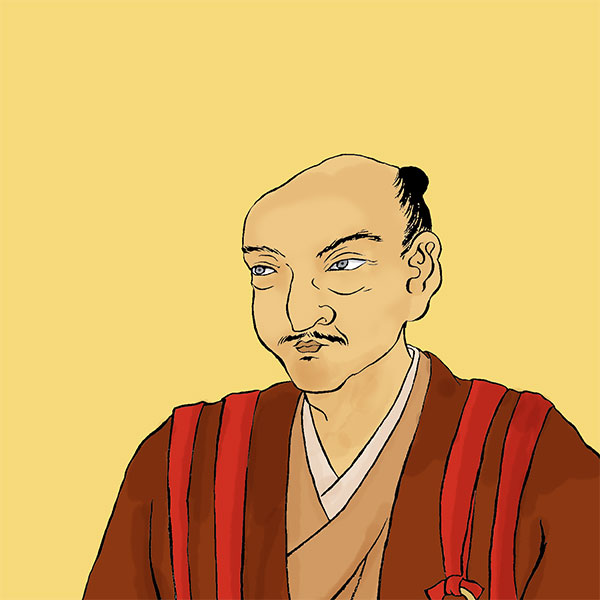Eiroku Incident (1/2)"Great swordsman general" Yoshiteru Ashikaga is defeated by the Miyoshi trio and others.
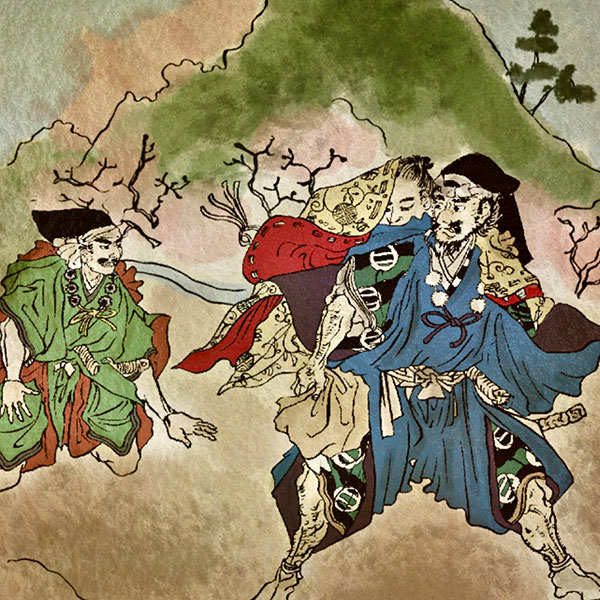
Eiroku Incident
- Article category
- case file
- Incident name
- Eiroku Incident (1565)
- place
- Kyoto
- Related castles

Nijo Castle
On May 19, 1565, the Miyoshi Sanninshu and Michi Matsunaga (son of Hisashi Matsunaga) murdered Yoshiteru Ashikaga, the 13th shogun of the Muromachi shogunate, in the Eiroku Incident. This incident was so shocking that it sent shockwaves throughout Japan.Onin WarorMeio political changeAlthough the power of the Muromachi shogunate was declining, it was unprecedented for a shogun to be killed by a vassal. Why on earth did such an incident occur? I would like to take a closer look.
Miyoshi clan VS Hosokawa clan VS Shogun family - long-standing power struggle
The Miyoshi trio, Nagaitsu Miyoshi, Soei Miyoshi, and Tomomichi Iwanari, were the ringleaders of the Eiroku Incident. They were senior vassals of the Miyoshi clan, whose base was Awa Province (present-day Tokushima Prefecture). Nagaitsu Miyoshi was an elder figure in the Miyoshi clan, and was a person who supported Master Miyoshi along with Hisashi Matsunaga. Souichi Miyoshi was originally a vassal of Harumoto Hosokawa, who was an enemy of Nagayoshi, but in 1558 he became a vassal of Nagayoshi. Tomomichi Iwanari is a person of unknown origin who rose to prominence after being promoted in the Kinai area. In addition, Michi Matsunaga was the son of Hisahide Matsunaga and served the Miyoshi clan after taking over the headship of the family from Hisahide in 1563. In other words, the Eiroku Incident was an incident in which the Miyoshi clan rebelled against the Shogun family.
Speaking of the Miyoshi clan, Nagayoshi Miyoshi (1522-1564), the ``first ruler of the Sengoku period'' who was one generation before the members of the Eiroku Incident, is famous, but from around that time the Miyoshi clan began to participate in power struggles. Ta. The Meio Coup, which occurred in Kyoto in April 1493, led to the mastermind Masamoto Hosokawa seizing power, and the shoguns were divided into the Yoshitane line (the 10th shogun) and the Yoshizumi line (the 11th shogun). The generals) will be divided into enemies. When Masamoto, who had seized power, was assassinated in June 1507 due to problems with his successor, the Hosokawa clan split internally and continued to fight over the family headship for several decades. (Ryohosokawa Rebellion). This was coupled with the conflict for the shogunate position between the Ashikaga clan, which was split into two factions, and an extremely complex conflict structure was created.
The Miyoshi clan had been serving the Hosokawa clan since the Onin War, and during the civil war, Miyoshi Yukinaga, the head of the Miyoshi clan, followed Sumimoto Hosokawa. After Yukinaga's death, his grandson (some say his son), Motonaga Miyoshi, looked up to Sumimoto's son, Harumoto Hosokawa, as his lord, and supported Harumoto to gain control of the Hosokawa clan.
The Hosokawa clan's civil war ended with Harumoto seizing power. Motonaga was active in defeating Harumoto's political opponent, Takakuni Hosokawa, but later came into conflict with Harumoto over his future policy. In addition, there were moves by his vassals, including Masanaga Miyoshi, a member of Motonaga's clan, who were jealous of Motonaga's progress and tried to overthrow him, and the relationship gradually deteriorated. In the end, Harumoto worked behind the scenes to eliminate Motonaga and initiated the Ikko Ikki of Honganji Temple. As a result, in 1532, Motonaga was attacked by the Ikko Ikki and was forced to commit suicide.
His successor was Nagayoshi Miyoshi, who was only 10 years old. He plays an important role in mediating peace between Harumoto and the Ikko Ikki, which has become more powerful than Harumoto expected, and crushing the Ikko Ikki's stronghold. After that, while serving Harumoto, he kept his eyes on the enemy and saved up his strength by aiming for the lower best. In 1548, he asked Harumoto to subjugate Masanaga Miyoshi, but Harumoto refused. For this reason, Nagayoshi joined forces with Hosokawa Ujitsuna and others who had previously been his enemies, and rebelled against Harumoto. He then won the Battle of Eguchi in June 1549, and succeeded in driving out Harumoto Hosokawa and Yoshiharu and Yoshiteru Ashikaga and their son, who were allied with Harumoto, from Kyoto. They continued to control the Kinai region and established the Miyoshi government.
In the midst of the power struggle, what about Yoshiteru Ashikaga?
Yoshiteru Ashikaga, the 13th shogun, was born in 1536 during the conflict between the Miyoshi clan and the Hosokawa clan. He is a shogun and a person of the Yoshizumi school, born as the eldest son of Yoshiharu Ashikaga, the 12th shogun. At the time of Yoshiteru's birth, there was an active battle for power between Harumoto Hosokawa and Yoshiharu, and Yoshiharu spent his days traveling back and forth between Kyoto and his base in Omi Province (Shiga Prefecture). Ta.
Meanwhile, in 1546, Yoshiharu handed over the title of shogun to Yoshiteru, who was only 11 years old. Yoshiharu's plan seems to have been to hand over the title of shogun to his son while he was still alive and to become Yoshiteru's guardian. By the way, Yoshiharu himself inherited the title of shogun at the age of 11, and is thought to have followed his own precedent.
After falling to Omi Province in the Battle of Eguchi, Yoshiharu continued his efforts to recapture Kyoto, but died of illness in Omi Province in May 1550. Yoshiteru, who succeeded him, and Harumoto Hosokawa tried to take back Kyoto many times, but in the end they failed. After several battles, Nagayoshi Miyoshi and Harumoto and Yoshiteru made peace in 1552 through the intercession of Sadayori Rokkaku and Yoshikata. The terms of the peace agreement were that Harumoto would hand over the headship of the family to Ujitsuna and become a priest, that his son Soumeimaru (Akimoto Hosokawa) would be appointed in his place, and that Yoshiteru would go to Kyoto. As a result, Yoshiteru will finally visit Kyoto at the end of January.
Harumoto thought that everything would be resolved, but it seems that he was not satisfied with the peace and continued to fight with Nagayoshi. Yoshiteru also got along with Harumoto, and in 1553 they fought against him, but were defeated in the end. Yoshiteru fled to Omi Province and set out to recapture Kyoto. Finally, in November of the first year of Eiroku (1558), the two sides made peace. It is said that the person who interceded at this time was Yoshikata Rokkaku, who tried to make peace because he thought that Yoshiteru would not be able to fully support the battle in favor of the Miyoshi clan. Thus, Yoshiteru returned to Kyoto for the first time in five years.
Yoshiteru increases the authority of the shogunate in Kyoto
Miyoshi Nagayoshi, who accepted Yoshiteru Ashikaga, formally served Yoshiteru, the 13th shogun. Yoshiteru gave Nagayoshi the status of a servant and made him a direct vassal of the shogun. However, Nagayoshi held the real power of the shogunate.
Afterwards, in order to break free from this situation, Yoshiteru mediated disputes between feudal lords of the Sengoku period and worked to restore the authority of the shogunate by giving them key positions in the shogunate. Although the real power rested with Nagayoshi, the shogunate had a certain degree of presence. Also, around this time, Oda Nobunaga and Uesugi Kenshin went to Kyoto and had an audience with Yoshiteru.
Furthermore, in 1564, he deprived Sadataka Ise of the position of butler, the top government official in charge of the shogunate's lawsuits and finances, and gave it to Harumon Settsu, his uncle in law, in 1564. The Ise clan was a long-established family that had held the office of administrative butler for some time, and Sadataka was originally supposed to follow Yoshiteru. However, while Yoshiteru opposed Nagayoshi Miyoshi and fled the capital, he became acquainted with Miyoshi's side and survived. Furthermore, during the Rokkaku clan's rebellion, while Yoshiteru and Nagayoshi were fighting, the Rokkaku clan continued to stay in the occupied Kyoto, and continued to engage in problematic behavior such as conducting arbitrary trials and exempting themselves from moral rule. It was replaced in 1562. Sadataka Ise then raised an army at Mount Funaoka in Kyoto, but was defeated and killed in battle.
Placing this uncle in charge of government office was of great significance for restoring the shogun's power. Since Yoshimitsu Ashikaga, the third shogun of the Muromachi shogunate, the Ise clan, which had inherited the stewardship of Mandokoro for a long time, had great power, and Mandokoro was a place that even the shogun could not control. However, these actions of Yoshiteru caused the Miyoshi clan to become wary. Mr. Miyoshi's idea was that the shogun was merely a puppet, and that he held the real power himself.
As the relationship between the Shogun family and the Miyoshi clan became strained, Nagayoshi died of illness in 1564. In fact, over the past few years, key people in the Miyoshi clan had died one after another, and in the previous year, in 1563, his son Yoshioki Miyoshi also died of a sudden illness.
Nagayoshi Miyoshi was succeeded by Nagayoshi's nephew Yoshitsugu. Yoshitsugu, who was only 14 years old, was guardiand by the Miyoshi Sanninshu and the Miyoshi clan's senior vassal Hisashi Matsunaga. For them, Yoshiteru Ashikaga, who saw the death of Nagayoshi, the main pillar of the Miyoshi family, as an opportunity to gain power through increased political activity, was a nuisance. For this reason, they finally take action.
The Eiroku Incident breaks out, and the Miyoshi trio attacks the imperial palace.
On May 19, 1565, Yoshitsugu Miyoshi, the Miyoshi Sanninshu, and Dori Matsunaga surrounded Kyoto's Nijo Imperial Palace with approximately 8,000 (10,000) soldiers. This is the outbreak of the Eiroku Incident. Initially, the Miyoshi side filed a complaint stating that they had a lawsuit (demand) against the shogun and asked for intermediary, but they invaded the imperial palace without waiting for Shinshi Seisha, who was in charge of intermediary, and the war began. For this reason, Shinshi Seisha took upon himself the responsibility of allowing the enemy to invade, and committed seppuku in front of Yoshiteru Ashikaga. Furthermore, according to Louis Frois's History of Japan, Shinshi Seisha was furious and committed seppuku because the intermediary's letter contained a request for the murder of his own daughter (= Yoshiteru's concubine and minor chamberlain). Apparently he did.

- WriterNaoko Kurimoto(Writer)I am a former travel industry magazine reporter. I have loved history, both Japanese and world history, since I was a child. I usually enjoy visiting temples and shrines, especially shrines, and often do ``pilgrimages to sacred places'' themed around historical figures. My favorite military commander is Ishida Mitsunari, my favorite castle is Kumamoto Castle, and my favorite castle ruins is Hagi Castle. My heart flutters when I see the ruins of battle castles and the stone walls of castle ruins.


